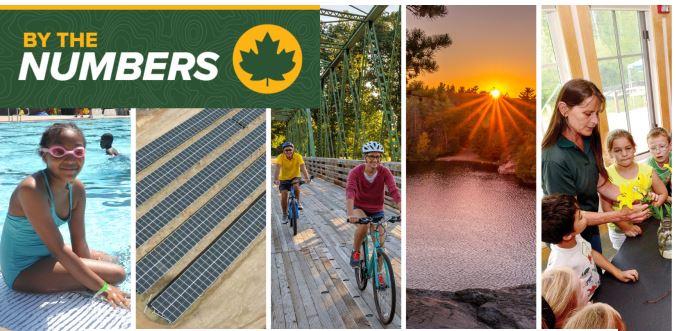
BY THE NUMBERS: NY STATE PARKS AND HISTORIC SITES
Gather ‘round, New Yorkers. The New York State Park and Historic Site system’s Centennial Celebration is underway, and we want to make sure visitors near and far understand: this system was built for you.
When most people think of “NY State Parks,” they likely think of hiking trails, summer swimming and cookouts, or fall and winter staples like leaf peeping and cross-country skiing. But our park and historic site system encompasses so much more. Through the fun statistics below, learn about the impact our parks have on communities, the environmental progress we’re making, and fun factoids State Parks facilities are hiding in plain sight.

Your Parks and Historic Sites
250: properties we have throughout New York State. That includes not only parks and historic sites, but trails, campgrounds, golf courses, and beaches, too.?There’s always more to discover. Find one near you at parks.ny.gov.
54: State Parks with beaches. From the oceanfront vistas at Jones Beach, Sunken Meadows and other Long Island parks, to the endless expanses of the Great Lakes beaches like Southwick and Evangola, to the friendly feel of smaller beaches like Delta Lake, our parks are the perfect place to enjoy the surf and sand!
26: nature centers in our parks. From honeybees to sea stars to geology and botany, our nature centers are built for learning more about New York’s wild side!
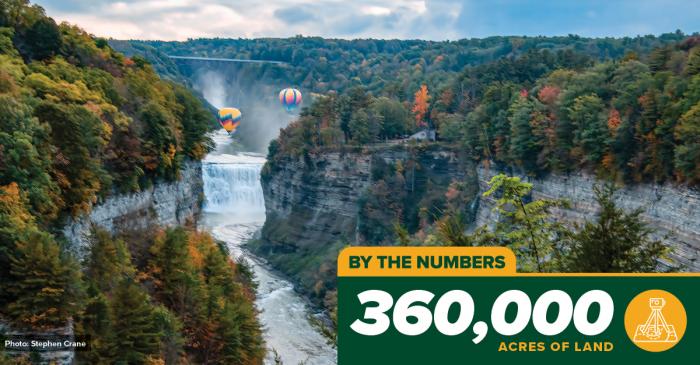
360,000: acres of land across New York State dedicated to state parks, campsites, historic sites and more. Acre for acre, it’s one of the largest systems in the United States! Over?90% of the acreage is natural and undeveloped.
28: golf courses, including the famous Bethpage Black Course, which is set to host the Ryder Cup in September of 2025.
8,555: campsites in our parks. Camping is ingrained in who we are and what we do. Whether you’re laying your head in a tent or an RV, there’s something magical about spending the night in a state park.
2,000: miles of trails throughout New York State. They might be simple loops made for family recreation, miles-long trails that connect communities like the Empire State Trail, Genesee Valley Greenway or Old Croton Aqueduct Trail, or paths through peaceful backcountry, trails are the core of what we do. New Yorkers gravitate towards them for walking, biking, running, hiking, cross-country skiing, snowshoeing, birding, and even horseback riding!
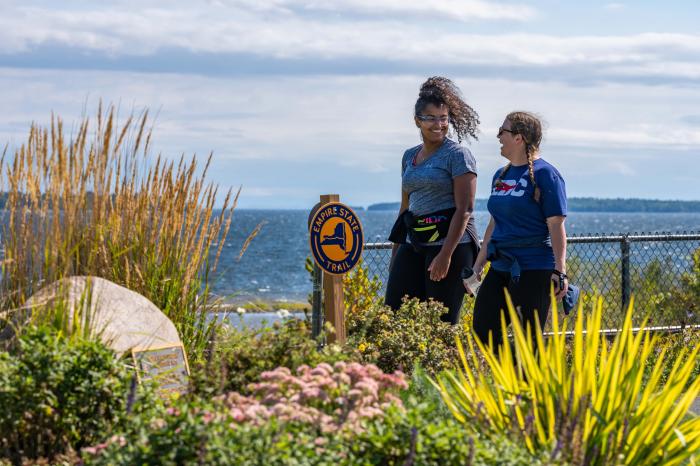
107,000: picnic tables across New York State parks and historic sites! If you’ve ever sat at one, we hope you’ve taken in a spectacular view, enjoyed a delicious meal during an adventure, or made a special memory with friends and family.
967: cabins and cottages, 18 yurts, three inns, and – yes – one lighthouse. There are countless adventures for every type of stay.
24: pools and spraygrounds to keep you cool! As part of the recently-proposed NY SWIMS initiative, we’ll be at the forefront of expanding access to safe swimming in New York. This includes renovating some of our facilities and reinvigorating our Learn To Swim program. Learn more here.
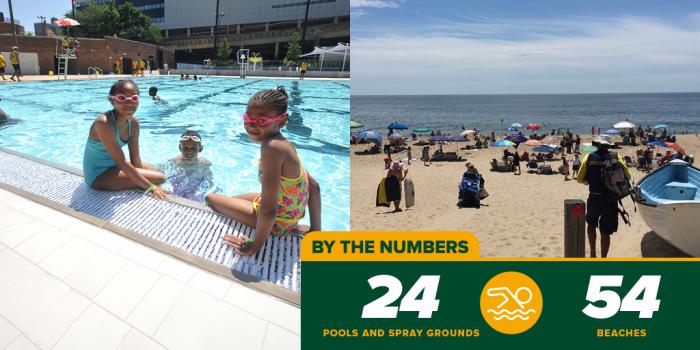
100: years since the formation of the New York State Council of Parks, which created the system we know and love today. We’re celebrating 100 years of parks throughout 2024, and we hope you’ll join us! Find out how.
Flora, Fauna and our Greater Environment
180: species of rare animals found in our parks. State parks provide habitat for a dizzying array of flora and fauna, rare or not. Caring for this habitat is a critical part of our mission.
240: species of rare plants?.
1: species found nowhere else in the world: the Chittenango ovate amber snail. This endangered species is only at Chittenango Falls State Park. Here’s a past blog post telling its story.
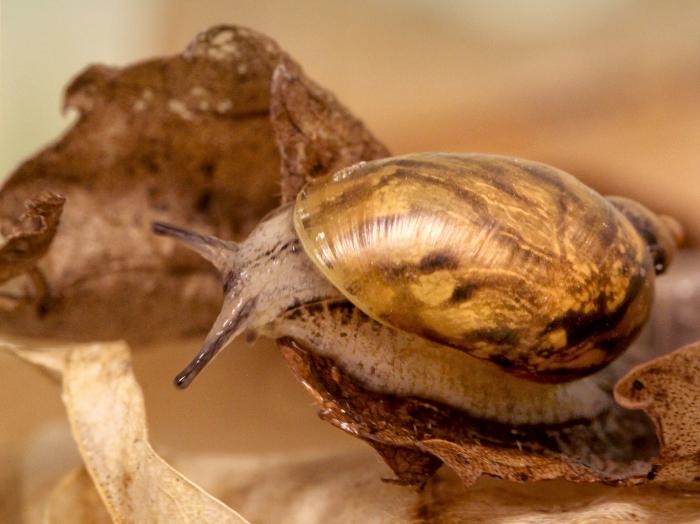
217: invasive species control projects completed at 107 State parks and Historic Sites in 2023.
140 miles: shoreline along the?Great Lakes and St. Lawrence River?.
183 miles: shoreline along the?oceanic coast and Hudson River?.
Energy and Environmental Stewardship
50: energy audits conducted at our Parks, identifying and implementing hundreds of energy conservation measures to make its facilities more efficient, saving on energy and utility costs, and reducing greenhouse gas emissions.
52: solar arrays totaling over 6 megawatts in State Parks.
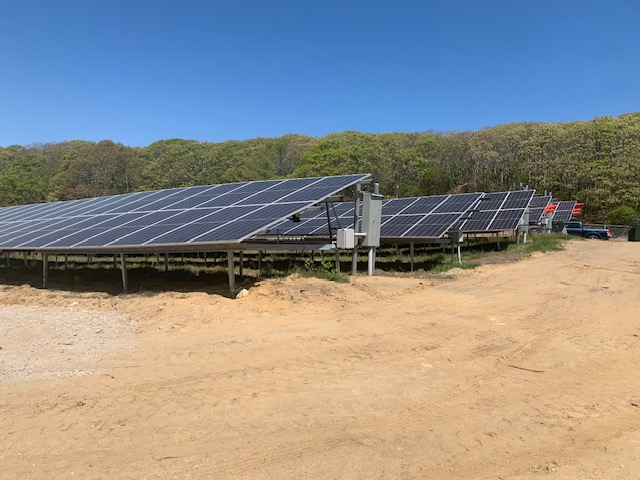
6,500: megawatt hours of electricity generated annually by State Parks’ solar arrays, which is around 15 percent of the agency’s annual electric consumption.
74: plug-in hybrid and electric vehicles in our fleet.
62: EV charging stations across State Parks, which are able to charge 106 public and Park fleet vehicles at once.
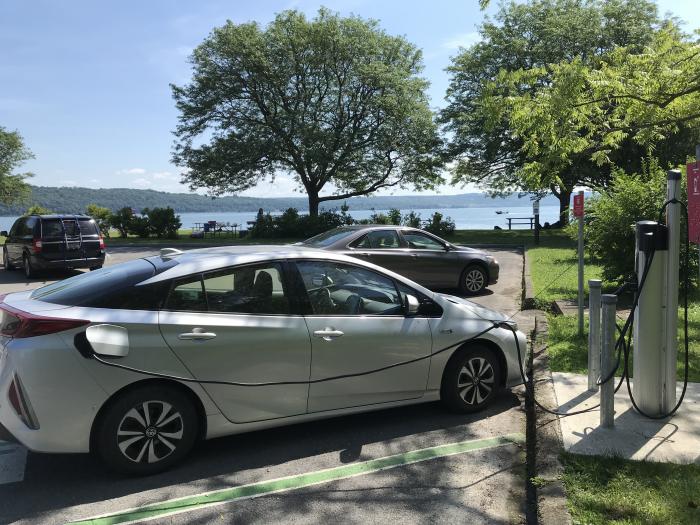
Community Connections
69: Environmental Educators around the state who work to provide educational programming to school groups, pre-school children, and adults alike. Events provided by Environmental Educators include guided hikes that focus on things like tree species or the moon phases, bird watching, maple tapping, animal tracking, programs that highlight the region’s ecosystems, and many others.
1: Autism Nature Trail, the first nature trail in America designed specifically for people with autism and related disabilities to experience deep nature.
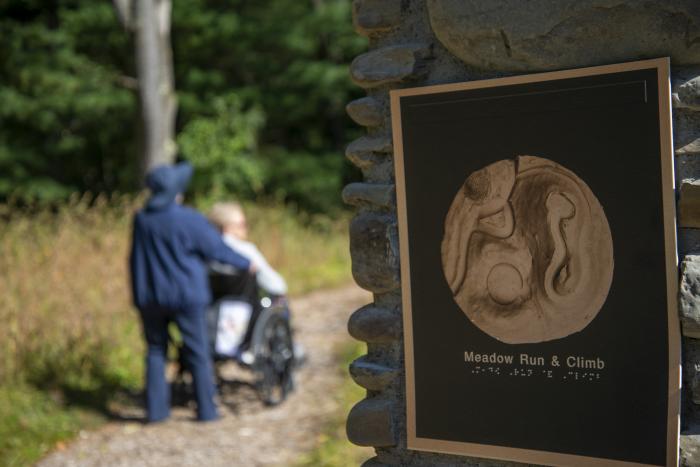
75: Friends Groups and Non-Profit Community Partners who support their local state parks and historic sites through volunteer activities, engaging programming, and many other ways to ensure they remain a vibrant, welcoming place for all.
38,929: children served through State Parks’ “Ladders to the Outdoors” program since 2020. Students hail from over 50 school districts and more than 125 community-based organizations.
336,394: students from 364 school districts, connected to nature through the “Connect-Kids-To-Parks” grant program. These grants have helped fund over 6,000 field trips since 2016.

2: free public transportation initiatives, connecting city residents to nearby State Parks and natural lands.
1,538: water samples were collected in 2023 at bathing beaches to test for water quality.
24,972: watercraft inspections and 58,672 park patrons educated about aquatic invasive species impacts and spread prevention were completed by the ESF-Parks Boat Steward Program.



